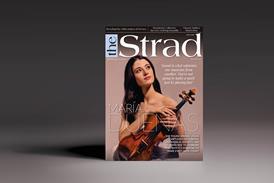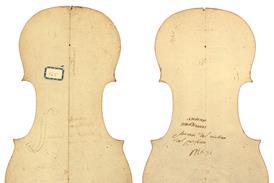- News
- For Subscribers
- Student Hub
- Playing Hub
- Podcast
- Lutherie
- Magazine
- Magazine archive
- Whether you're a player, maker, teacher or enthusiast, you'll find ideas and inspiration from leading artists, teachers and luthiers in our archive which features every issue published since January 2010 - available exclusively to subscribers. View the archive.
- Jobs
- Shop
- Directory
- Contact us
- Subscribe
- Competitions
- Reviews
- Debate
- Artists
- Accessories
Where should string players look when performing from memory on stage?

Teacher Talk: your string teaching questions answered by our panel of experts. From October 2011
Explore more Featured Stories like this in The Strad Playing Hub
Where should violinists look when they are performing from memory on stage? DANIEL ARSHAVSKY, ATLANTA, US
GÉZA SZILVAY Performing from memory on stage is admired by many people, though without real reason. Béla Bartók, one of the finest pianists of his time, always played with the score in front of him, and today other soloist giants like Gidon Kremer also prefer to perform from music.
Artists of that stature do not really read or play the music from the part in front of them, though. The sheet music merely embodies the great work of art. The soloist is looking at the musical monument itself, not at its building bricks – that’s to say the individual notes. They feel that behind the hundreds of bars and thousands of notes, the composer is present. The music stand with the score on it functions as a musical altar, and the altar demands dignity. The soloist should control their manners, and only beautiful movements are acceptable. The music stand with the music aids the placement and poise of the player. They should not stare at the audience or gaze at the ceiling of the hall, but neither should they keep their eyes closed for too long.
The stand does not hinder the visual connection between the soloist and the conductor or sonata partner. On the contrary, it widens the soloist’s visual field. You can easily control the fingers on the fingerboard and at the same time receive supportive smiles from the viola or cello sections in the orchestra, and you might even answer them with a wink.
Next time, try taking the music on stage with you
Already subscribed? Please sign in
Subscribe to continue reading…
We’re delighted that you are enjoying our website. For a limited period, you can try an online subscription to The Strad completely free of charge.
* Issues and supplements are available as both print and digital editions. Online subscribers will only receive access to the digital versions.






















